|
|
|
|
Category: Outside Influences
How to Change a Life
 When I was 16 years old, I applied for a job as a summer camp counsellor. For 11 years I had spent each and every one of my summers at Camp Tamarack. I couldn’t think of anything I wanted to do more than work at the camp that had played such an important part in my growing up. Before camp started, there was a two week intensive training session which included role plays with a licensed social worker, lessons on child development, workshops on drama activities, and first aid training. We were working from morning revelry at 6 AM, our breath white in the cold Michigan July mornings, to 10 PM at night. On the last night of the pre-camp training, the assistant director of the camp, gave the following speech:
When I was 16 years old, I applied for a job as a summer camp counsellor. For 11 years I had spent each and every one of my summers at Camp Tamarack. I couldn’t think of anything I wanted to do more than work at the camp that had played such an important part in my growing up. Before camp started, there was a two week intensive training session which included role plays with a licensed social worker, lessons on child development, workshops on drama activities, and first aid training. We were working from morning revelry at 6 AM, our breath white in the cold Michigan July mornings, to 10 PM at night. On the last night of the pre-camp training, the assistant director of the camp, gave the following speech:
In three weeks, the counsellors of the oldest kids at camp are going to be taking their bunks out on a canoe trip for 6 nights and 7 days. On the last mile of that trip, the river reverses course because of a dam. That last mile of canoeing is nearly impossible. 17 years ago, there was a young camper on the very same canoe trip. He was the smallest member of his bunk. He spent the whole summer trying just to keep up with the other kids who seemed so much bigger, so much stronger than him. During the canoe trip, he felt pretty useless. He paddled, but it felt like he was just dipping his paddle into the water. But when they got to the point where the river reversed its current, everything changed. He could feel the water pushing against his paddle. He could see the other campers struggling. So he paddled as hard as he could. And the canoe barely pushed its way through the water. When they finally reached the small stretch of beach where they landed the canoes, that small boy couldn’t feel his arms. He couldn’t even lift the paddle he was holding high enough to put it in the truck waiting to carry the canoes and paddles back to camp. At that moment, his counsellor came up to him and said, “You know, there was a moment when I thought we weren’t going to make it. I was just about to pull the canoe to the side of the river and have us carry the canoe the rest of the way. But then I looked at you, at how hard you were paddling, and I knew we would make it. And we did. We made it because of you.” Now you might be wondering how I know so much about just what that small camper did and heard that day. I know because that camper was me. And it’s because of what my counsellor said to me 17 years ago that I’m standing up here in front of you today. It’s the reason I work at this camp. It changed my life. Each and every one of you can do the very same thing. Each one of you can change a child’s life. Not by empty praise, but by watching your campers carefully. By noticing when they do something that perhaps they never thought they could do. And at that moment, letting them know that you noticed it, too. That yes, they really did do something extraordinary. That’s what it means to be a camp counsellor.
When I heard that speech I realised that yes, that is what I wanted to do as well. I wanted to be there for campers and students and friends at just those moments, to have the chance to change a life. That was over 27 years ago. I still haven’t figured out how to always notice those moments. And I certainly haven’t found the right words to say each and every time I am lucky enough to notice them. But, on a warm summer night, the day before my campers came to put their trust in me for a summer, I took the first step to understanding what being a teacher might be all about.
The iTDi community is the richest and most diverse group of teachers I’ve ever had the good fortune to work with. I feel lucky to have had the chance to read the interviews in this issue, to learn more about the people who have helped the iTDi-ers become the gifted and unique teachers that I have come to know. And with this issue, we are also taking the conversation to the wider community. A number of iTDi bloggers have written ‘Outside Influences’ posts on their own blogs. I hope you will take a few moments to read and enjoy them as I have. And if you decide to join in the conversation and write a post for your own blog, let me know and I will added to the growing list of teachers sharing the stories of the people who have helped them help make iTDi the place where, ‘Together, we can change the future.’
‘Outside Influences’ blog posts from around the web:
Sandy Millin on the (heroic) women of her family
Vicky Loras on her first real teacher
Anne Hendler on why sometimes you need a turtle
Josette LeBlanc continues the conversation with her father
Theodora Pap on her personal champion, Kostas Michalakis
Me (again) on learning laughter
An Outside Influence from Within My Family
 In fourth grade (I was about 9 years old), we were assigned the task of interviewing someone about their job. I interviewed my father’s friend and colleague who was a member of parliament. My friend interviewed my father, Guy J. LeBlanc. At the time, my father was a newly appointed member of the legislative assembly of Nova Scotia and represented Clare, the community we grew up in. Not too long after, someone asked me why I hadn’t interviewed my father. I had honestly never considered it. I guess I thought that the interviewee had to be someone outside my family. I remember feeling guilty about not having had this foresight. I felt like I had let my father down by taking him for granted.
In fourth grade (I was about 9 years old), we were assigned the task of interviewing someone about their job. I interviewed my father’s friend and colleague who was a member of parliament. My friend interviewed my father, Guy J. LeBlanc. At the time, my father was a newly appointed member of the legislative assembly of Nova Scotia and represented Clare, the community we grew up in. Not too long after, someone asked me why I hadn’t interviewed my father. I had honestly never considered it. I guess I thought that the interviewee had to be someone outside my family. I remember feeling guilty about not having had this foresight. I felt like I had let my father down by taking him for granted.
About 28 years later, during my last winter vacation, I finally took the chance to interview him. But this time it wasn’t to just to learn about his work; it was to learn about how we are connected. I wanted to ask him about his experience in education since he seems to have worked in all possible parts of this field: swimming instructor; high school teacher; elementary school physical education (PE) teacher; minister of education for the Nova Scotia provincial government; principal at my old high school; high school principal in the neighbouring community; and superintendent for the francophone school board in Nova Scotia. This doesn’t begin to name all the other leadership roles he’s taken in our small community as well as the educational community at large. I thought his life experience might shed light on my own perspective of this field.
So lounging on the sandy white St. Pete Beach, with the warm sun shining down on us, I pressed record and asked him about his most significant moments.

Translating from French for this blog post, with the pleasant sound of waves, wind, and seagulls in the background, I transcribed *the first of our five interviews. Three themes stand out from this first interview: my father’s desire to create positive change in his community and how this relates to the well-being of the individual person, and his ability to take risks for causes he believes in.
One of the first positive changes he brought to our community happened at the beginning of his teaching career when he was an elementary school PE teacher. Hearing him describe this moment was significant to me because he was talking about something I had been very fond of as elementary student: taking swimming classes.
Me: What was one of your most memorable moments teaching PE?
Guy: One of my greatest accomplishments was convincing the school board to teach swimming to all elementary students for 10 weeks instead of the regular PE classes. There were many drownings at that time. Every summer there was a young person who drowned. The predominant industry in Clare was fishing. Everyone spent time around wharves and boats, so for me it was important for kids to learn how to swim. So I was able to convince the school board on the basis that if the kids could take the basics, they would be safer citizens.
Some kids could swim, but some kids had never seen a pool and would never see one because their parents couldn’t afford to bring them to the pool at St. Anne University. Like this, transportation was provided for the students, the “foyer ecole” (home and school association) raised money to pay for the buses, and the school board approved. This way everyone learned artificial respiration and other basic life saving skills, as well as basic swimming skills. If they fell in the water, they learned how to put on a life jacket and save themselves.
Looking back, that was probably one my best achievements at the elementary level.
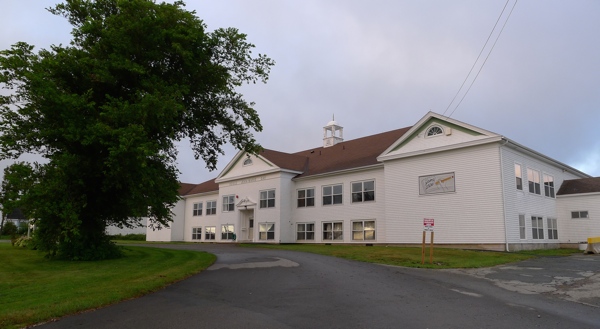
His desire to create positive change within the realm of education was not limited to his adult years, or even to his experience as an educator.
Guy: When I was a student at St. Anne, I had seen a bit of what happened in politics because we had started the strike at the university. The Eudistes (a congregation of French-Catholic priests) were in charge of the university at that time, and they were talking about moving the campus to Yarmouth (an English speaking community about 40km west of Clare). It had come out in the newspaper, so me and my friend John O’Brien — maybe it wasn’t only to save St. Anne; maybe it was so we wouldn’t have to go to class — we regrouped the students to protest the move to assure that the university would stay in Church Point (Clare). We organized a strike, as they called it. Every student didn’t go to class. We emptied the high school (Clare District High School)… all the students left school for a day or two.
Me: How old were you?
Guy: 18 or 19.
Me: How did you get the students out of the high school?
Guy: Someone passed all the houses and asked the parents if it was okay if their kids stayed away from school to protest. And everyone signed. There was a big volunteer organization of students who handled that, and we went to see the high school principal. As we said the name of the students (on the loudspeaker), they left school.
Although our community is francophone, at that time St. Anne was the only school in the area where the content and instructions were in French. Moving the school to Yarmouth meant putting our language and identity in jeopardy.
These are only two stories from the many stories he shared with me on the beach this winter. What did I learn from them? I learned that perhaps it’s normal for children take their parents for granted. Most of what we learn from our parents, doesn’t come from interviews, or even from words. My father’s actions spoke louder than words, and through this, I learned to have the outlook I have on life today. The outlook that positive change is possible, and that most of the profound changes we can make in our communities happen at the level of education. Schools may be the most powerful institutions in our communities. With good intentions and integrity on our side, we have the power to make education a legacy we can look back on with high regard. I am very grateful for my father’s legacy, and look forward to seeing what else it can teach me.
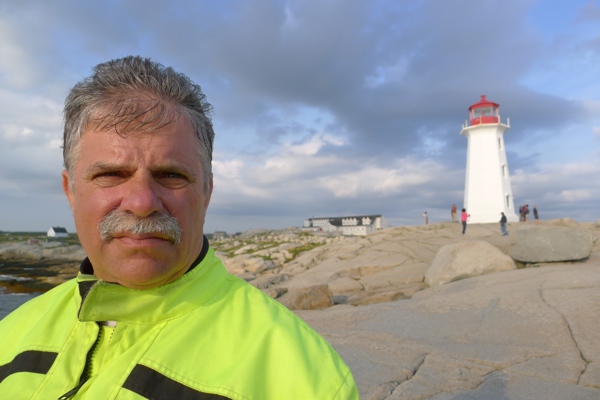
*I have posted the first part if this interview on my blog, Throwing Back Tokens. I intend to post the full interview, as well as the other interviews during the next few months.
Walking with K.T. Mohandas
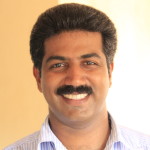 K.T.Mohandas, a 54 years old Mathematics Teacher and former educational officer, lives in Kerala, India. He has taught more than thirty-thousand students in his thirty-year career. The teachers in the village schools in India can sometimes seem like Emperors in their own villages, but for the most part they remain unknown to people outside that one area. Mr.Mohandas was such a teacher, until his school received the prestigious award for best Parent Teacher Association in Kerala State. Now, many school authorities turn to K.T. Mohandas for the comprehensive ‘Medicine’ they need to make their own schools a success.
K.T.Mohandas, a 54 years old Mathematics Teacher and former educational officer, lives in Kerala, India. He has taught more than thirty-thousand students in his thirty-year career. The teachers in the village schools in India can sometimes seem like Emperors in their own villages, but for the most part they remain unknown to people outside that one area. Mr.Mohandas was such a teacher, until his school received the prestigious award for best Parent Teacher Association in Kerala State. Now, many school authorities turn to K.T. Mohandas for the comprehensive ‘Medicine’ they need to make their own schools a success.
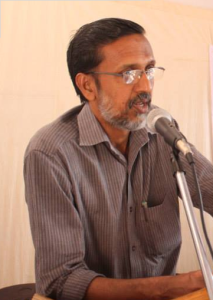 I met Mr. Mohandas early in my career. I became a high school teacher in 2006 when I was 28, after having already gained 4 years experience teaching University students. I had many prejudices about teaching in a high school and about high school students at that time. But K.T. Mohandas guided me to a different path, the right path…a path on which receiving love from the world is more important than earning a large salary. I remember one evening, we were staying late at the campus to plan for our December Intensive Student Camp, and Mr. Mohandas started to tell me stories of students who came to school for the free noon meal we served. He pointed out that the students might not be interested in school itself at first, but when they did enter our school, that gave us our chance. It was an eye-opener for me. It gave me the opportunity to rethink so many of the things that were going on with my students and in the world around me. From Mr. Mohandas, I learned that teaching is not a business but a service, a service not to just your students, but to humanity.
I met Mr. Mohandas early in my career. I became a high school teacher in 2006 when I was 28, after having already gained 4 years experience teaching University students. I had many prejudices about teaching in a high school and about high school students at that time. But K.T. Mohandas guided me to a different path, the right path…a path on which receiving love from the world is more important than earning a large salary. I remember one evening, we were staying late at the campus to plan for our December Intensive Student Camp, and Mr. Mohandas started to tell me stories of students who came to school for the free noon meal we served. He pointed out that the students might not be interested in school itself at first, but when they did enter our school, that gave us our chance. It was an eye-opener for me. It gave me the opportunity to rethink so many of the things that were going on with my students and in the world around me. From Mr. Mohandas, I learned that teaching is not a business but a service, a service not to just your students, but to humanity.
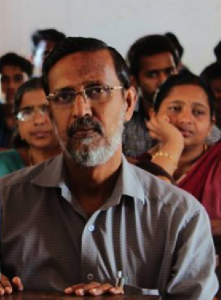 Early on, I noticed that Mr. Mohandas always took the utmost care to understand the problems of all his students. When former students visited the school Mr. Mohandas called each one by name, even students who he taught and who graduated 25 years ago. He tried to impress upon me that learning and remembering each students’ name is important because while a school has a responsibility to the society in which it is built, so too does the society have an obligation to pay attention and be involved with the school. To ensure this happens, teachers have to help students feel connected to the school long after they have graduated.
Early on, I noticed that Mr. Mohandas always took the utmost care to understand the problems of all his students. When former students visited the school Mr. Mohandas called each one by name, even students who he taught and who graduated 25 years ago. He tried to impress upon me that learning and remembering each students’ name is important because while a school has a responsibility to the society in which it is built, so too does the society have an obligation to pay attention and be involved with the school. To ensure this happens, teachers have to help students feel connected to the school long after they have graduated.
Mr. Mohandas’ innate passion for teaching eventually compelled him to leave his position as an educational officer to join the Government Higher Secondary School, Chorode as Headteacher 4 years ago. He agreed to my request for an interview for the iTDi blog and added that he has met Steven Herder online for the inauguration of his school’s IT Club and virtual classroom. The Interview has been lightly edited for clarity and brevity.
Can you tell me about your school?
My school (Government Higher Secondary School Chorode,Kerala)is situated in Kozhikode district of Kerala. We have classes from 8th Standard to 12th. It is the first wi-fi campus higher secondary school in the state and we also rank top in online activities.
I have heard much from you about your involvement with the wider community outside of your school How does this increased involvement of the wider society of the school effect the students?
When a person who has no visible direct connections with the school starts to help us in school activities by participating in Weekend Home Visits or by joining a Regional Level Local Educational Committee, first it is the students who develop a kind of conscience. They begin to think that they are involved in a very important, a very great business. And they also become more aware of their responsibilities within society. We have many ward level committees to check up on the students’ learning and development by visiting students in their homes. The ward level committee members also help provide solutions for students who are experiencing problems, if necessary.
You make extensive use of the specialists in the community, with members of the legislative assembly, engineers, and many others participating in school planning and other endeavours. How do you connect community members up with your school?
It is very simple.We have nearly 35 thousand alumni of our school. And many of them are well respected people. So, if we can get their help, it becomes much easier to plan activities. And the thing is, they are ready to help, if asked. They are even prepared to offer financial assistance to the school.
How did you go about applying for an award for the best PTA in the state?
This actually was my dream. At first we—the teachers, non-teaching faculty, parents, alumni and local community members—got together and made a master plan. We decided to focus our attention on three areas. Then we came up with three projects to help improve in those three ares. This resulted in the:
- Academic project named STEPS (Special Talent Achievement Programme for Students)
- A project for infrastructure development
- The Green Campus Project (a beautification project)
It took nearly three years to implement the plan and complete the construction work. And then we applied for the award.
Can you tell me about the Teacher Empowerment Programmes in your school?
We have many programmes, but I would like to tell you a bit about the Core-Oxford Project, which is one of them. It is a Teacher Empowerment Programme run in conjunction with the University of Oxford and the support of SCERT (The State Council of Educational Research and Training) Kerala. At present,ten of our teachers participate in the programme. They can log into the University of Oxford website and clarify any doubts they might have with the resources of the academic world of Oxford. Prof.David Johnson, Bob Ballard, Mike Taylor and P.T. Jenny Hsieh regularly interact with our teachers and provide all the assistance they might need.
Whats your next plan?
I have a number of enthusiastic teachers working together with me. Our next plan is to make our school the first paper free School in Kerala State. The initial talks have already begun. When we start a new project like this we start out by believing in it’s success. We start out by saying, ‘Let’s do it.’
Unleash The Superpowers
 On Kiran Bir Sethi, Design Thinking, And Saying Yes
On Kiran Bir Sethi, Design Thinking, And Saying Yes
 Kiran Bir Sethi is founder of Design For Change, a global initiative that empowers children to express their own ideas for a better world and put them into action. Since beginning in a single classroom with one teacher at Kiran’s Riverside School in Ahmedabad, India, the movement has spread to more than 25,000,000 children in over 35 countries.
Kiran Bir Sethi is founder of Design For Change, a global initiative that empowers children to express their own ideas for a better world and put them into action. Since beginning in a single classroom with one teacher at Kiran’s Riverside School in Ahmedabad, India, the movement has spread to more than 25,000,000 children in over 35 countries.
“Superheroes are not in fairy-tales. They are in every child who says I can.” – Kiran Bir Sethi
In fact, there’s a superhero residing deep in every one us, but it often takes a teacher we meet in school or encounter in the world before we realize the power we have to create positive change in ourselves, our communities, and our world. Such a teacher unleashes our powers by believing in us. That belief not only empowers us to do and be more, but also calls us to in turn believe in and empower others. This is how we change the world: one teacher, one student, one community at a time. Kiran Bir Sethi helped me understand this.
I first met Kiran the same that way millions of others have. I watched her TED talk “Kids Take Charge” in which she asks, “when are you going to wake up and recognize the potential that resides in every child?” I woke up. It was 2 AM on a winter night during a shadowy time of my life. Lost somewhere between dreams, I was clicking on random Internet links when Kiran turned up explaining how she took an idea she started in her own classroom, spread it through her school, then her city, and later all across India and into the world. The idea was Design for Change and the model was so brilliantly simple that anyone could do it.

Feel. Imagine. Do. Share. As I watched again, I became so excited and so infected with the I Can Virus which Kiran describes that I rose out of my funk, did some Googling, got Kiran’s contact information, then cold-called her and essentially said, “I can and I will, just please let me work with you.” The first thing Kiran said was, “Fantastic, let’s Skype,” and then my life changed forever. I tell that story in my own TEDx Talk but what’s important to know is that I’m no one special. I’m just a person who said yes. Each one of us has the power to change the world. In the largest sense, it works like this:
Ask others, “What change do you want to see in yourself or in your community?” Listen and encourage. Then ask, “What can you do to create that change?” Listen and encourage some more. Then say, “I know you can do that. I believe in you.” At this point the people you are working with will probably ask, “Really?” Say yes, then prove it by giving them the space, time, and tools they need to work that change. Keep encouraging. Meanwhile, provide a platform on which they can share their story of change, learn more, and connect with and encourage others. Does this sound familiar? It should. That’s a big part what iTDi does.
One thing I learned working with Kiran is that the Design Thinking that drives Design For Change is an incredible tool that helps teachers unleash their superpowers, too. Once that begins to happen, teachers often feel empowered enough in their own practice to then unleash the superpowers within their students. That’s how we change the world.
Not all that long ago I interviewed Kiran about the ideas that drive Design for Change, and asked what advice she’d give to other change-makers. Here’s some of that conversation.
When did you first realize that ordinary people have the power to do extraordinary things?
It’s an ongoing realization. It’s more like seeing the extraordinary in the ordinary. The goal is to keep seeing the potential that resides in people and then to keep opening up avenues for them to realize that potential.
What principles underlie Design For Change?
We don’t advocate a particular cause. We work with whatever bothers children and consciously focus on empathy. When children interact with life and empathize, they see they have the tools to make a situation better. Listening to children and sharing their designs is what’s behind it.
What’s the most life-changing advice you’ve received, Kiran?
The greatest investment you can make is in yourself. If you invest in yourself first, then you can invest in others. Still, my father taught me that nobody and nothing is indispensible. Living in the present, if you live it 100%, is more important than holding on to what you might have in the future.
What skills helped manage Design For Change?
The way this spread so quickly forced us to put aside fancy management ideas. The most important thing is to respond to requests immediately. We let partners know they’re part of a larger idea, and explain why they should do it, not how they should do it. Initially, we handhold, but we want them to say, ‘This is now our story, not Kiran’s story anymore.’ That’s an important construct.
What advice do you have for future change-makers and social entrepreneurs?
Start with empathy. You cannot change the world for somebody else. It has to start from within.
In a recent article in The New Indian Express, Kiran says …
“I teach because I love learning and no two days are ever the same – so, everyday I can become an explorer, or an artist, a magician or a storyteller. Teaching design thinking cultivates the design mindset – building empathy, ethics and elevation. To see the children and teachers look at situations as ‘opportunities’ instead of ‘problems’ is the greatest joy.”
If you feel the same way, I encourage you to get involved with Design For Change. Learn more about Kiran’s work, The Riverside School, and why all of this is so important here. Whatever you do, please know that you too have this power to change the world. Say yes.


 Unleash the Superpowers by Chuck Sandy
Unleash the Superpowers by Chuck Sandy


